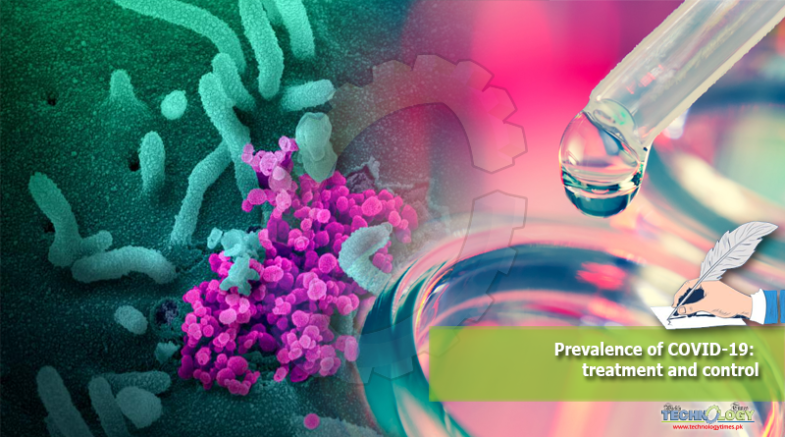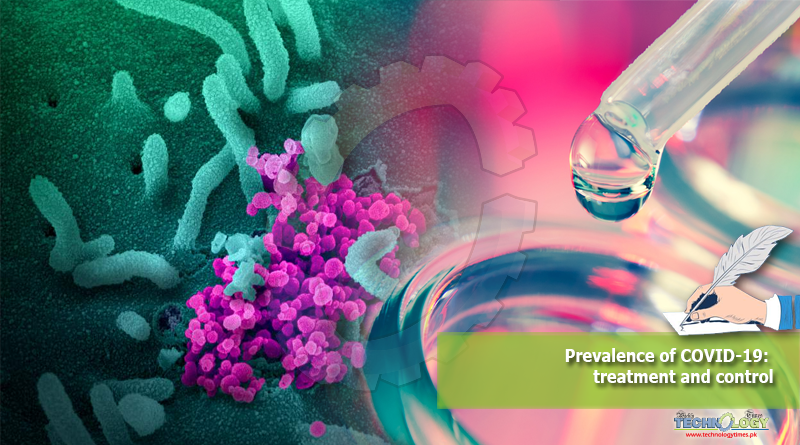At this time, there is no vaccine for COVID-19 or any natural health products that are authorized for treatment and control against COVID-19. Most people with mild coronavirus illness will recover on their own.

Novel coronavirus is a serious respiratory disease virus. The virus was first isolated in the China in late December 2019, and now has been detected all across the globe. The WHO declared the epidemic of COVID-19 as a pandemic on March 12th 2020.
The virus has been named as SARS-CoV-2 and the disease caused by this virus has been named as Covid-19 (coronavirus disease 2019). They have a large family of viruses that are common in human and different species of animals. Coronavirus has high zoonotic potential and can spread between people.
This SARS-CoV-2 belongs to the beta-coronavirus, like MERS-CoV and SARS-CoV. These viruses have the same origin, i.e., bats. Early on, many of the patients had some link to a large seafood and live animal market, suggesting animal-to-person spread.
Later on, an increased number of patients were reported that have no exposure to animal markets, indicating person-to-person spread. Still, there is no known full clinical picture of this disease. The older people and people of all ages suffering from severe underlying health conditions, including heart disease, lung disease and diabetes were at higher risk.
COVID-19 now a pandemic issue
A pandemic means when a new virus emerges to infect people and spread between people and spread across large regions. The virus has been detected in most of the countries and infecting people.
Pandemic begins with an investigation phase, followed by recognition, initiation, and acceleration phases. The peak of illnesses occurs at the end of the acceleration phase, which is followed by a deceleration phase.
Different countries can be in different phases of the pandemic at any point in time and different parts of the same country can also be in different phases of a pandemic.
Pakistan is now facing the COVID-19 wave with more than 7,400 cases, as of April 18th 2020. Thus, there is an urgent need for an effective treatment and control to treat symptomatic patients but also to decrease the duration of virus carriage in order to limit the transmission in the community.
Prevalence in Pakistan
Different parts of the country are seeing different levels of COVID-19 activity. The Pakistan nationally is currently in the initiation phases, but the community spread is occurring was in acceleration phase. The duration and severity of each phase can vary depending on the characteristics of the virus and the public health response.
Risk assessment and exposure
Risk factor depends on the characteristics of virus, including how well it spreads between people, the severity of resulting illness and the medical or other measures available to control the impact of disease.
In the absence of vaccine or treatment medications, non-pharmaceutical interventions become the most important response strategy. These are community interventions that can reduce the impact of disease.
The risk of exposure to the virus is still low for most of Pakistani’s but as the outbreak expands will increase the risk of disease.
- People in places where ongoing community spread of the virus that causes COVID-19 has been reported are at elevated risk of exposure
- Healthcare workers caring for patients with COVID-19 are at elevated risk of exposure.
- Close contacts of persons with COVID-19 also are at elevated risk of exposure.
- Travelers returning from affected international locations where community spread is occurring also are at elevated risk of exposure, with the level of risk depends on where they travel.
Signs and Symptoms
People who are infected with COVID-19 have little to no symptoms. The incubation period of the disease was up to 14 days. This is the longest known infectious period for this disease. Scientists are currently investigating if the virus can be transmitted to others if someone is not showing symptoms. Symptoms include: fever, cough, difficulty breathing and pneumonia in both lungs. In severe cases, infection can lead to death.
Diagnosis
Coronavirus infections are diagnosed by a health care provider based on symptoms and are confirmed through molecular and serological testing includes Real-time reverse-transcription polymerase chain reaction and enzyme-linked immunosorbent assay.
Treatment and Control
At this time, there is no vaccine for COVID-19 or any natural health products that are authorized to treat or protect against COVID-19. Most people with mild coronavirus illness will recover on their own.
The hydroxychloroquine is efficient in combination with azithromycin as it clears viral nasopharyngeal carriage of SARS-CoV-2 in COVID-19 patients in only three to six days.
As earlier Chinese published the in vitro results of hydroxychloroquine (EC50=0.72%μM) was helpful to inhibit the SARS-CoV-2. Azithromycin prevents severe respiratory tract infections, when administrated to patients suffering viral infection.
Hydroxychloroquine and azithromycin were helpful to cure the infection and to limit the transmission of the virus to other people in order to curb the spread of COVID-19 in the world.
This article is collectively written by Muhammad Hunain Ahmed, Muhammad Tariq Javed, Narmeen Tariq, Shaza Zarnab, Aira Tariq, Sami Ullah Khan Bahadur.
